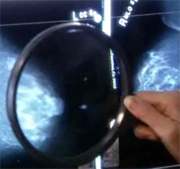New focus on tumor subtypes could help patients, according to medical groups
TUESDAY, March 31, 2015 (HealthDay News) — Classifying breast cancers according to tumor subtypes could help improve treatment of the disease, according to a new statement from four major medical groups focused on the disease. The report was published online March 30 in the Journal of the National Cancer Institute.
The report was issued Monday by the American Cancer Society, the U.S. Centers for Disease Control and Prevention, the U.S. National Cancer Institute, and the North American Association of Central Cancer Registries. The report “assesses breast cancer as four molecularly defined subtypes, not as a single disease,” National Cancer Institute director Harold Varmus, M.D., said in an institute news release. “This is a welcome step, depending on medically important information that already guides therapeutic strategies for these subtypes.”
The four tumor types are: Luminal A (HR+/HER2−), Luminal B (HR+/HER2+), HER2-enriched (HR−/HER2+), and triple negative (HR−/HER2−). Some differences in breast cancer rates and deaths between racial and ethnic groups are also tied to differences in the rates of different breast cancer subtypes emerging in those groups, the report suggests. For example, rates of HR+/HER2− breast cancer — the least aggressive subtype — were highest among white women. Blacks had higher rates of the most aggressive breast cancer subtype — triple negative — than other racial/ethnic groups, and also had the highest rates of late-stage disease.
Varmus called the move towards more categorization, “a harbinger of the more rigorous classification of cancers based on their molecular features that is now being aggressively pursued under the President’s Precision Medicine Initiative. The new diagnostic categories now being defined will increasingly support our ability to prevent and treat breast and many other kinds of cancer, as well as monitor their incidence and outcomes more rigorously over time.”
Copyright © 2015 HealthDay. All rights reserved.








